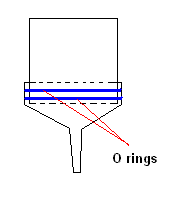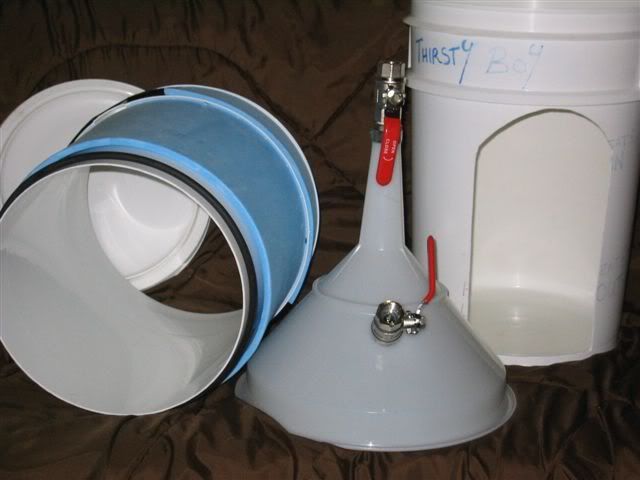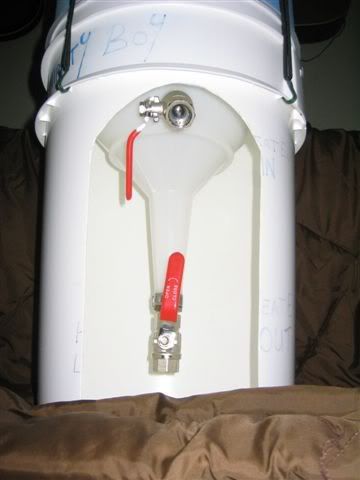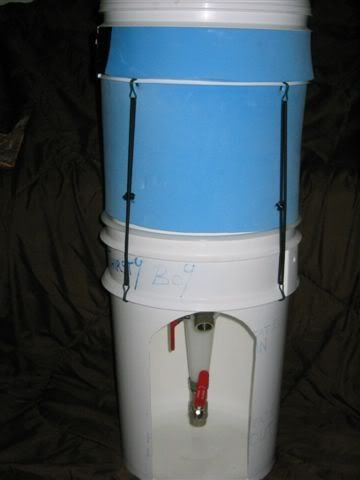Malted
Humdinger
- Joined
- 15/5/10
- Messages
- 2,301
- Reaction score
- 115
OnederBrew. Affordable plastic conical fermenter???
Caveat: I have no commercial interests in this product. I am just a backyard brewer that thought it looked worth a try.
Summary (for the TLDR crowd):
Question: Is this a good product? Is it value for money? Should I get one?
Answer: Not too bad all things considered. Expect some compromises, if you can, make up your own mind if it might suit you.
So a stainless conical fermenter will cost you upwards of $800. The Onederbrew plastic conical fermenter retails for $200 USD, plus postage to Australia. Those who have bought large items from the states will know that postage is not cheap. To be honest I did not pay retail (don't count on getting the same deal I did) and I got two unassembled units sent in the regular single packaging so postage per unit was half (postage alone was $99 USD for the two units).
Enough text. Let's see some pictures!

It was quite a large box that they came in and delivery time was quite quick. I found the Onederbrew team to be very good with communications.

Here are all the bits and pieces with assembly instructions. You can see the inverted cones and the clamping rings that secure them to the 5 gallon buckets. The legs and other components are in the bags. It is basically a cone that goes onto a bucket that is available in the USA.

Here is how it looks assembled compared to a VB style of fermenter. You can see the Onederbrew is significantly taller, as you would expect of a conical fermenter. Having said that you can see the total height has been reduced as much as possible.
It has a pressure relief port, racking port and a yeast removal port. The idea is that you can brew with it pressurised to minimise oxygen in the wort. There are supposed to be a number of advantages to brewing beer in a pressurised vessel.
The makers claim that can brew in it, remove the yeast, condition in it, chill in it and dispense from it all without introducing any oxygen. With the pressure assembly, you use the fermentation to carbonate your beer. One vessel rather than fermenter, secondary vessel, bulk priming vessel, bottles or kegs etc.
Now more about how it goes together and what I think of it.

You put your cooled wort into the bucket (base to ground, opening skyward), put the inverted cone onto the bucket, secure it and then once sealed, flip the whole unit for brewing. There is a red gas relief tube that extends into the headspace to allow venting of excess CO2. I think the tube could benefit from being a little longer as I'd rather it closer to the top (which was the bottom) of the bucket; I would want it venting CO2 rather than wort. Even though the bucket is not located over the main silicone gasket you can see approximately how far the tube extends into the bucket.

Here is a cone with the inner reinforcing ring (right) and the main silicone gasket (left). It is quite a thick and robust silicone gasket. The cone itself is much thicker than I had anticipated.

The reinforcing ring goes in. Note that it partially covers the pressure relief port hole which we will see more of later.

Here is the main silicone gasket fitted to the cone and inner reinforcing ring.

All of the taps and fittings have a half inch thread as well as double o-rings. There are two of these taps pictured; one for the racking port and one for the yeast port. You could swap them out for taps of your choice.

Here is the first fitting that goes into the pressure relief port hole. The red tube just presses into this fitting. If you press it in too far, it could block the hole that allows the CO2 through.
Caveat: I have no commercial interests in this product. I am just a backyard brewer that thought it looked worth a try.
Summary (for the TLDR crowd):
Question: Is this a good product? Is it value for money? Should I get one?
Answer: Not too bad all things considered. Expect some compromises, if you can, make up your own mind if it might suit you.
So a stainless conical fermenter will cost you upwards of $800. The Onederbrew plastic conical fermenter retails for $200 USD, plus postage to Australia. Those who have bought large items from the states will know that postage is not cheap. To be honest I did not pay retail (don't count on getting the same deal I did) and I got two unassembled units sent in the regular single packaging so postage per unit was half (postage alone was $99 USD for the two units).
Enough text. Let's see some pictures!

It was quite a large box that they came in and delivery time was quite quick. I found the Onederbrew team to be very good with communications.

Here are all the bits and pieces with assembly instructions. You can see the inverted cones and the clamping rings that secure them to the 5 gallon buckets. The legs and other components are in the bags. It is basically a cone that goes onto a bucket that is available in the USA.

Here is how it looks assembled compared to a VB style of fermenter. You can see the Onederbrew is significantly taller, as you would expect of a conical fermenter. Having said that you can see the total height has been reduced as much as possible.
It has a pressure relief port, racking port and a yeast removal port. The idea is that you can brew with it pressurised to minimise oxygen in the wort. There are supposed to be a number of advantages to brewing beer in a pressurised vessel.
The makers claim that can brew in it, remove the yeast, condition in it, chill in it and dispense from it all without introducing any oxygen. With the pressure assembly, you use the fermentation to carbonate your beer. One vessel rather than fermenter, secondary vessel, bulk priming vessel, bottles or kegs etc.
Now more about how it goes together and what I think of it.

You put your cooled wort into the bucket (base to ground, opening skyward), put the inverted cone onto the bucket, secure it and then once sealed, flip the whole unit for brewing. There is a red gas relief tube that extends into the headspace to allow venting of excess CO2. I think the tube could benefit from being a little longer as I'd rather it closer to the top (which was the bottom) of the bucket; I would want it venting CO2 rather than wort. Even though the bucket is not located over the main silicone gasket you can see approximately how far the tube extends into the bucket.

Here is a cone with the inner reinforcing ring (right) and the main silicone gasket (left). It is quite a thick and robust silicone gasket. The cone itself is much thicker than I had anticipated.

The reinforcing ring goes in. Note that it partially covers the pressure relief port hole which we will see more of later.

Here is the main silicone gasket fitted to the cone and inner reinforcing ring.

All of the taps and fittings have a half inch thread as well as double o-rings. There are two of these taps pictured; one for the racking port and one for the yeast port. You could swap them out for taps of your choice.

Here is the first fitting that goes into the pressure relief port hole. The red tube just presses into this fitting. If you press it in too far, it could block the hole that allows the CO2 through.



























